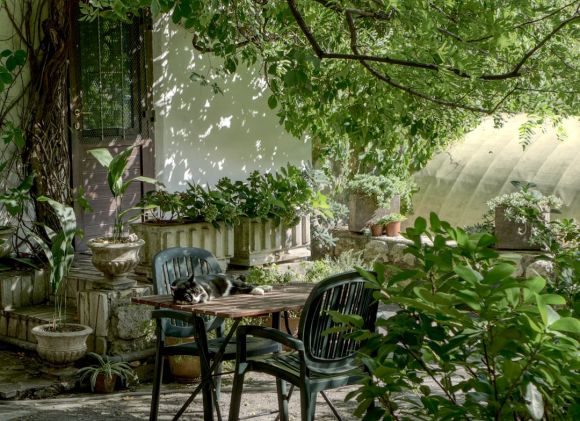Privacy is an important aspect of any home or property. Whether you have nosy neighbors, want to create a secluded outdoor space, or simply desire a sense of tranquility, landscaping can help you achieve the privacy you crave. By strategically using plants, structures, and other elements, you can create a private oasis that suits your tastes and needs. In this article, we will explore some effective techniques for creating privacy with landscaping.
Planting Trees and Shrubs
One of the most natural ways to add privacy to your outdoor space is by planting trees and shrubs. Tall, dense trees such as evergreens, bamboo, or cypress, can act as a living wall, effectively blocking unwanted views. Shrubs, such as arborvitae or boxwood, can also be used to create a dense hedge that provides privacy and serves as a natural barrier. When choosing plants, consider their growth rate and ultimate size, as well as their foliage density. Proper placement and regular maintenance will ensure that your trees and shrubs continue to provide privacy for years to come.
Building Fences and Walls
Another popular method for creating privacy is by building fences or walls. These structures not only provide a physical barrier but also add aesthetic value to your landscape. Depending on your preferences and budget, you can choose from a variety of materials, such as wood, vinyl, or stone. Fences can be customized to suit your style, whether you prefer a traditional picket fence or a modern, sleek design. Walls, on the other hand, can be constructed using bricks, concrete, or even natural stone for a more rustic look. Whichever option you choose, make sure to comply with local regulations and obtain any necessary permits before starting construction.
Installing Privacy Screens or Panels
If you prefer a more flexible approach to privacy, consider installing privacy screens or panels. These can be made of various materials, such as wood, metal, or fabric, and can be easily moved or adjusted as needed. Privacy screens can be placed strategically around your outdoor space to block specific views or create separate areas. They can also be used to shield your patio or deck from prying eyes. Choose screens or panels that complement your overall landscape design and provide the level of privacy you desire.
Creating Outdoor Structures
Outdoor structures, such as pergolas, arbors, or gazebos, can not only enhance the beauty of your landscape but also provide privacy. By strategically placing these structures, you can create secluded areas within your outdoor space. For example, a pergola covered with climbing vines can create a private seating area or an outdoor dining space. An arbor or trellis covered with flowering plants can add both beauty and privacy to your garden. Gazebos can be used as a quiet retreat or a place for entertaining guests, while also offering privacy from the surrounding environment.
Incorporating Water Features
Water features, such as fountains, ponds, or waterfalls, can serve as a focal point in your landscape while also creating a sense of privacy. The sound of running water can help mask unwanted noise and create a serene atmosphere. By strategically placing water features, you can create a barrier between your outdoor space and the outside world. For example, a small pond with a waterfall can provide a visual and auditory screen, blocking views and creating a sense of privacy. Additionally, water features can attract birds and other wildlife, enhancing the overall tranquility of your outdoor space.
In conclusion, creating privacy with landscaping is not only achievable but can also be an enjoyable process. By utilizing a combination of trees, shrubs, fences, screens, structures, and water features, you can create a private oasis that reflects your personal style and meets your privacy needs. Whether you desire a secluded outdoor space for relaxation, want to block unsightly views, or simply want to enjoy your property without feeling exposed, landscaping can help you achieve the privacy you desire.





